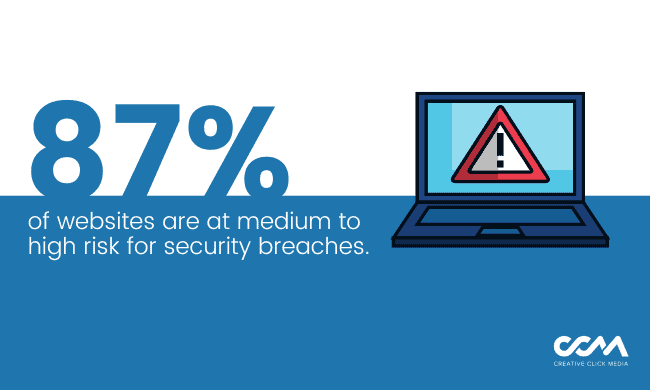With so many elements of a comprehensive digital marketing strategy, it’s no surprise that website maintenance is often overlooked. It makes sense – maintaining a website can be time-consuming and, frankly, nowhere near as exciting as creating one. But just because website maintenance might not be the most glamorous task, that doesn’t mean it isn’t important. In fact, website maintenance is essential to keeping your business afloat in the digital age.
Luckily, there are a few key steps you can take to make website maintenance a breeze. Here are 12 actionable tips for maintaining a website and keeping your site up-to-date:
1) Check for Outdated Plug-Ins
One of the most important aspects of maintaining your website is to frequently check for outdated plug-ins. Outdated plug-ins can cause major security vulnerabilities on your website, which can lead to hacking or data breaches. Not only that, but it can also cause your website’s performance to suffer by slowing down your load times.
To avoid this, make sure to check for updates to all of the plugins on your website regularly. A great place to start is the WordPress plugin directory if your website is hosted on the platform, but there are other tools available on the web to help you identify any outdated plugins that may be interfering with your security and functionality.
2) Look for Theme Updates
In addition to maintaining your website’s plugins, you should also check that your theme is updated on a regular basis. Like plugins, themes can also become outdated and present security vulnerabilities. In fact, as many as 87% of websites are at medium to high risk for cyber security breaches for this reason! As WordPress is constantly updating its platform, it’s important to keep your theme up-to-date so that your website is compatible with the latest version and protected from vulnerabilities.
Again, the WordPress plugin directory is a great resource for finding updated themes. Simply search for your theme and if an update is available, it will be listed next to the download button. You may also want to check with your theme’s developer to see if they offer any update notifications or tools that could streamline this process.

3) Run Security Scans
Another important aspect of maintaining your website is to regularly run security scans. There are many different types of security threats that can jeopardize the safety of your website, such as malware, viruses, and SQL injection attacks. By running a security scan, you can identify any potential threats and take steps to mitigate them before they cause any damage.
There are a number of different tools and website software available that you can use to run a security scan, so it’s important to do your research and find one that’s right for you. Once you’ve found a tool that you’re comfortable with, make sure to run a scan on a regular basis – once a month at minimum. It’s important to note that there are many free security scanning tools available on the web, but you likely will not receive the comprehensive security protection your website needs without a paid subscription.
4) Update Your Content
In the fast-paced world of digital marketing, it’s no surprise that one of the critical elements of maintaining a website is regularly updating outdated content. Not only does this ensure that your website visitors have the most accurate information, but it also helps to improve your search engine optimization (SEO).
One way to keep your website content fresh and up-to-date is by adding and updating website pages, such as blogs, company updates and new services. Be sure to also check for any outdated statistics or information that may be on your website content and update them accordingly. Not only will this improve the user experience for your website visitors, but it can also help you attract new visitors and improve your website’s ranking in search engine results pages. Your visitors will thank you, and your SEO strategy will too.
5) Check for Broken Links
Another common issue that should be part of routine website maintenance is checking for broken links. Over time, website URLs can change or pages can be taken down entirely. This can lead to frustration for website visitors if they click on a link only to be taken to an error page, or worse, a malicious website.
To avoid this, it’s important to regularly check for any broken links on your website. There are a few different ways that you can check for broken links, but one of the most effective is by using a tool like Google’s Webmaster Tools. Simply enter your website’s URL and Google will crawl your site to check for any broken links. If any are found, you’ll be given a list of the problematic URLs so that you can update or remove them as needed.
6) Fix Minor Bugs
Over time, all websites will experience some type of bug or error. While these may seem like minor issues, they can have a major impact on your website’s functionality and usability. As such, it’s important to fix any bugs as soon as possible before they are able to cause any serious problems such as data loss or security breaches.
There are a few different ways that you can find and fix website bugs. One is to simply keep an eye out for any errors that may pop up on your website. Another more effective method is to use a tool like Google’s Webmaster Tools which will alert you to any issues that Google’s crawlers come across when crawling your website. By exterminating any bugs before they’re able to snowball into a larger issue, you’ll be saving yourself a ton of time in your website maintenance efforts.
7) Monitor Your Performance
A key aspect of ensuring your website is up-to-date is monitoring your website’s performance. This includes keeping an eye on your website’s uptime, speed, bounce rate and overall functionality. Any sort of drops or unexplainable patterns in these areas could be indicative of a larger issue that needs to be addressed.
There are a number of different tools available that you can use to monitor your site performance in your website maintenance efforts, but one of the most comprehensive and user-friendly options is Google Analytics. With Google Analytics, you can track all sorts of data related to your website including how many people are visiting, how long they’re staying and what pages they’re viewing. This information can be invaluable in identifying any potential problems with your website so that you can take corrective action as needed. Google Analytics is free, but it can be time-consuming and overwhelming to decipher so much information yourself. If this is a concern of yours, you may want to pass this task off to a digital marketing agency that can handle it for you.
8) Backup Your Website
One of the most important things that you can do to keep your website up-to-date is to regularly backup your website’s files and data. This way, if anything were to happen to your website, you would have a recent backup that you could use to restore your website. 68% of businesses don’t have a data recovery plan should something happen to your website, and you certainly don’t want yours to be one of them! Think of it like an insurance policy for your website – one that you hope you never have to use, but you’ll be glad you have as a safety net should something happen.
While there’s no set frequency for how often you should be backing up your website, you should strive for quarterly if not more often. There are a number of different tools available that you can use to automate this process, but one of the most popular is WordPress Backup Plugin. With this plugin, you can easily create a full backup of your WordPress website with just a few clicks. It may seem tedious, but backing up your website is one task that you definitely don’t want to skip out on in your website maintenance efforts.

9) Test Your Forms
If your website has any sort of contact or lead capture forms, it’s important to regularly test them to ensure they’re working properly. There’s nothing worse than losing out on a potential customer or client because your contact form wasn’t working. As much as we’d like to believe site visitors will find another way to get in touch with us, the reality is that they’re probably more likely to reach out to a competitor instead.
There are a number of different ways that you can test your forms, but one of the most effective is to simply fill them out yourself and submit them. This will allow you to see firsthand if you’re receiving the information that you expect and if the overall process is working as it should. If you find that your forms are not working properly, make sure to fix them as soon as possible.
10) Consider a Website Redesign
As your business grows and changes, so too should your website. A website redesign is a great way to freshen up your site and make sure that it’s responsive to the needs of your business. Believe it or not, web design and website maintenance actually go hand in hand. Not only will a redesign give your website a much-needed facelift, but it can also improve your website performance and functionality.
When it comes to redesigns, the best time to do one is before your web design starts to show its age. By proactively redesigning your website every few years, you can avoid the need for major overhauls down the road. Not to mention, a well-designed website will help you stay ahead of your competition and attract more leads and customers.
11) Boost Your Budget
Another way to ensure your website is always up-to-date is to boost your budget for website maintenance. This may seem counterintuitive, but by setting aside a larger budget for things like website design, development and digital marketing, you’ll actually be saving yourself money in the long run.
Website maintenance cost is often a deterrent for many businesses, but it shouldn’t be. In fact, website maintenance cost is often far less than the cost of having to overhaul your website entirely due to neglect. By properly maintaining your website, you can avoid costly down-time, data loss and security breaches. These are all things that can have a major impact on your business, both financially and reputationally. If you’re not already doing so, start setting aside a larger budget for website maintenance and you’ll thank yourself later. Rather than letting website maintenance costs eat into your profits, look at it as an investment in the future of your business.
12) Hire A Digital Marketing Agency
Let’s face it – website maintenance can take a ton of time to do right, and a ton of time usually isn’t something many business owners have on hand. One of the best ways to ensure your website is always up-to-date and performing at its best is to hire a digital marketing agency that can handle it for you. A good digital marketing agency will not only help you with your website maintenance, but they’ll also provide a host of other services that will benefit your business. The key is finding one that specializes in a comprehensive suite of website maintenance services.
By hiring a full-service digital agency (like ours!), you’ll be able to work closely with a web designer, web developer, SEO expert and content creator – all of whom will work with you to ensure your website is regularly maintained and up-to-date. Not to mention, you’ll have peace of mind knowing that your website is in good hands and being taken care of by professionals. This will free you up to do what you do best: run your business.
Maintaining A Website to Maintain Your Success
No matter your size, industry or location, regular website maintenance is essential to maintaining your business’s success. By properly maintaining your website, you can avoid costly down-time, data loss and security breaches. Not to mention, you’ll be able to keep your website current with the latest trends and technologies, while impressing your current and potential clientele in the process.
Of course, maintaining a website is no easy feat – especially if you’re running a business at the same time. Fortunately, that’s where we come in. Creative Click Media’s team of digital marketing experts will take care of all the heavy lifting for you, combining our website maintenance services with SEO, web design, web development, content marketing and more to ensure your website is always up-to-date and designed to convert. Your website maintenance plan is only a click away – contact us to get started.





